Planetary stages
The following describes the modeling system for cylindrical gear planetary stages in the REXS interface.
Terminology
A planetary stage (also referred to as an epicyclic gear) is an assembly (a partial gear unit) in which some shafts are not fixed to the casing with reference to the inertial system, but rather in a so-called planet carrier, which itself can be rotated. This creates a so-called "non-constrained" (partial) gear unit with a kinematic degree of freedom > 1. Therefore, any number of speeds can and must be specified for its outward facing shafts, as indicated by the degrees of freedom, in order to clearly kinematically describe the state of movement of all its members [Müller, Umlaufgetriebe]. The proportion of outward-acting torques in this non-constrained (partial) gear unit is always determined by the gear ratio. In contrast, in a "constrained" stationary transmission, the specification of a single speed is sufficient to determine the state of motion of all of its members, and any number of torque ratios can be realized for multiple outward facing shafts.
Note
The following only describes the process for modeling cylindrical gear planetary stages! Constructions such as bevel gear differentials are not covered.
The following terms are used:
Planetary stage: Assembly that represents a non-constrained partial gear unit. It includes at least one sun gear-planet gear or planet gear-ring gear engagement as well as exactly one planet carrier.
Planet carrier: Assembly in which the planetary shafts are mounted, and which is mounted concentrically to the central axis of the planetary stage. The carrier shafts, side plates, pins (if applicable), and struts (if applicable) as well as the couplings between these components are counted as part of this assembly.
Central shaft: Shaft mounted concentrically to the central axis of the planet stage on which the sun or ring gear is mounted.
Sun shaft: Central shaft on which a sun gear is mounted.
Ring gear shaft: Central shaft on which a ring gear is mounted.
Planet shaft: Shaft that can rotate about its own axis that is mounted excentrically to the central shafts in a planet carrier. Therefore, in addition to rotating about its own axis, it can also rotate about the central axis of the planetary stage. The planet shaft can either be mounted to a pin or directly in the side plates.
Carrier shaft: Shaft mounted concentrically to the central axis of the planetary stage, on which a planet carrier (or side plate) is fixed.
Pin: Shaft arranged excentrically to the central axis that are fixed in a non-rotatable fashion in the side plates of the planet carrier, and on which a planetary shaft is mounted.
Side plate: Disc-like component of the planet carrier that is fixed concentrically on a carrier shaft, and into which either the planetary shafts or the pins are excentrically mounted.
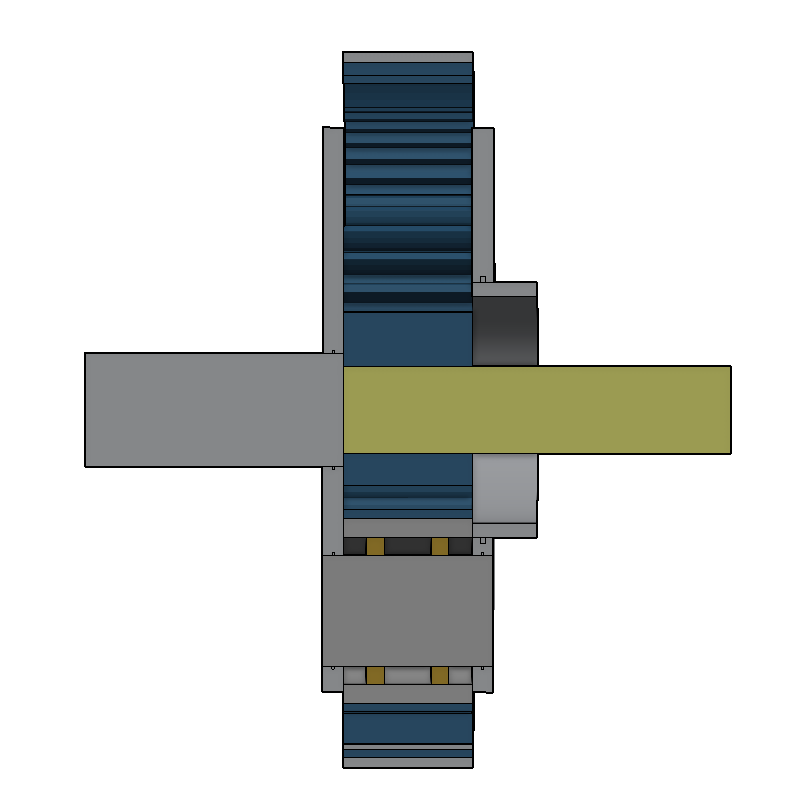 Sun shaft (shaft) | 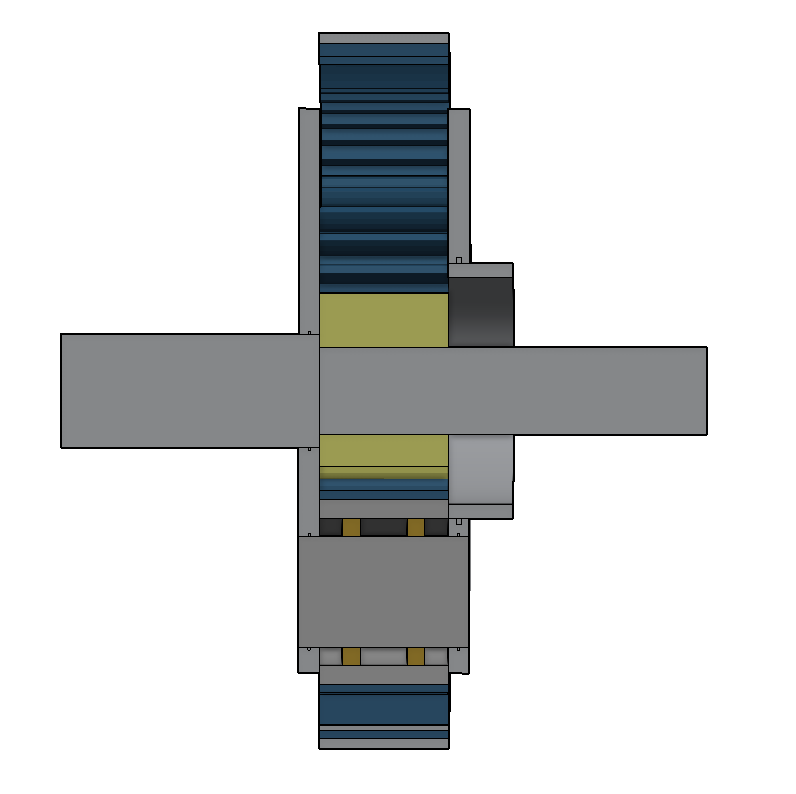 Sun gear (cylindrical_gear) | 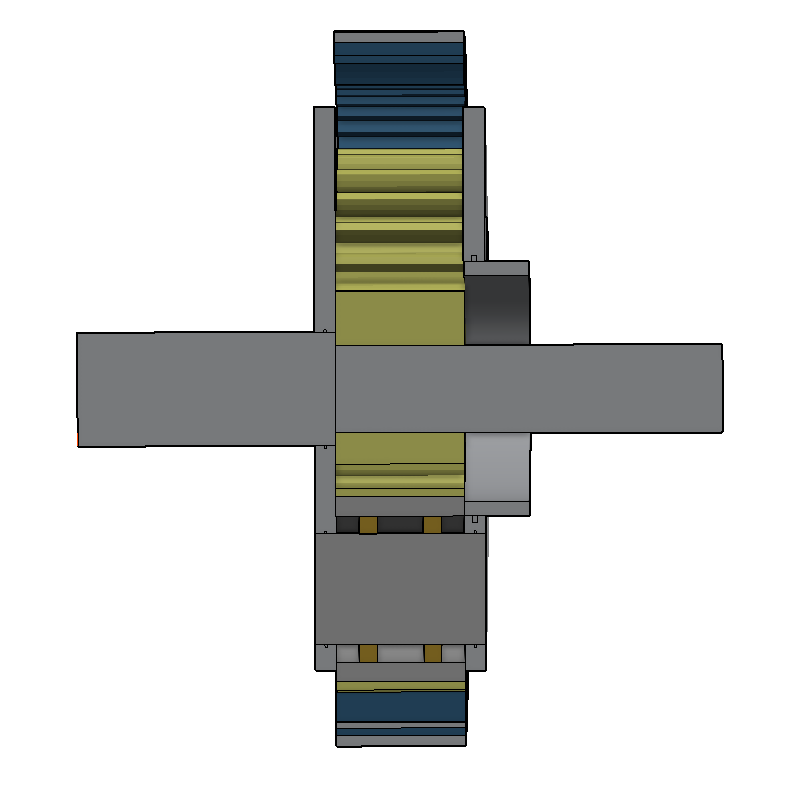 Sun-planet mesh (cylindrical_stage) | 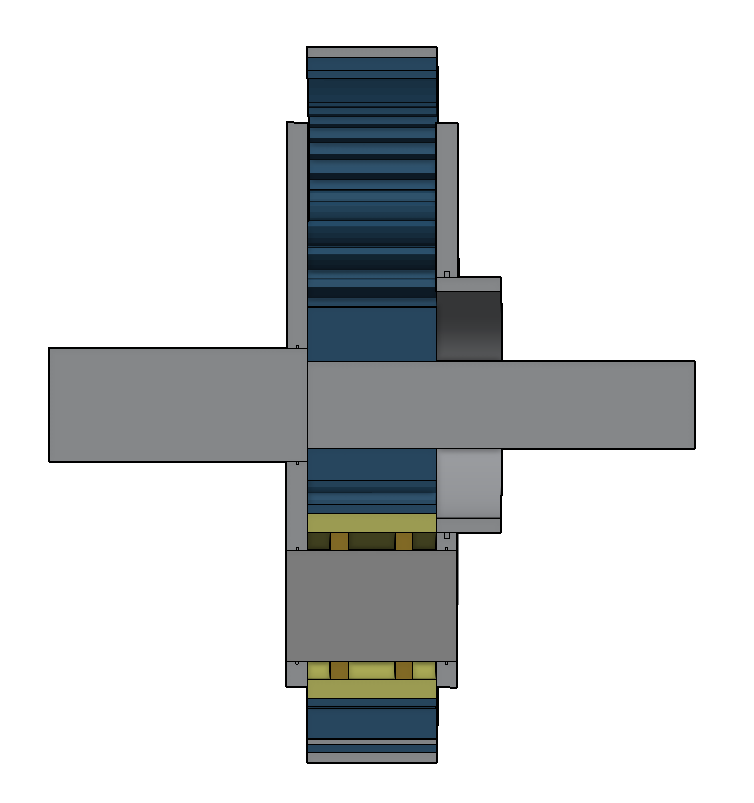 Planetary shaft (shaft) |
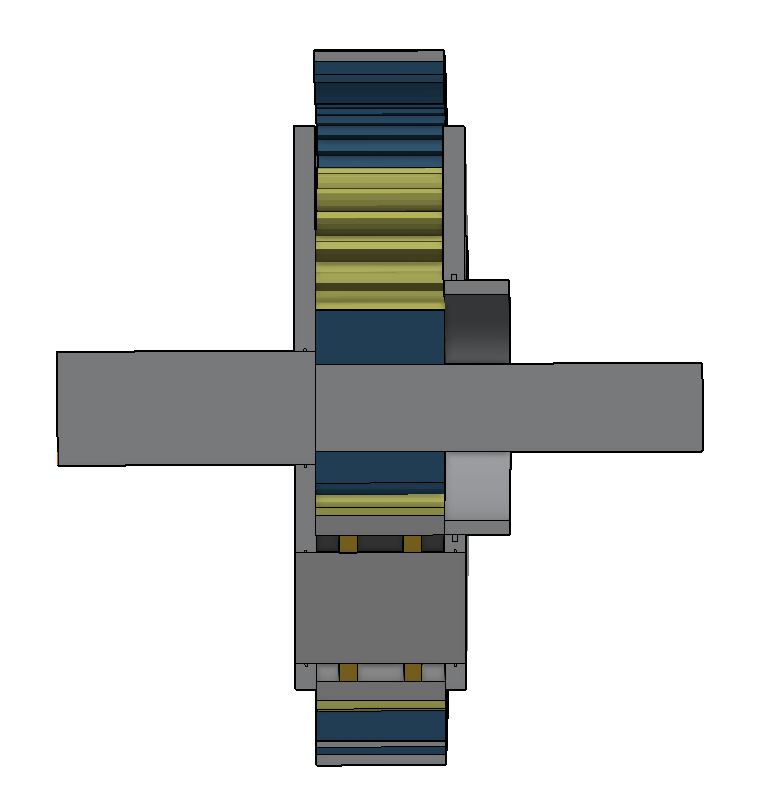 Planetary gear (cylindrical_gear) | 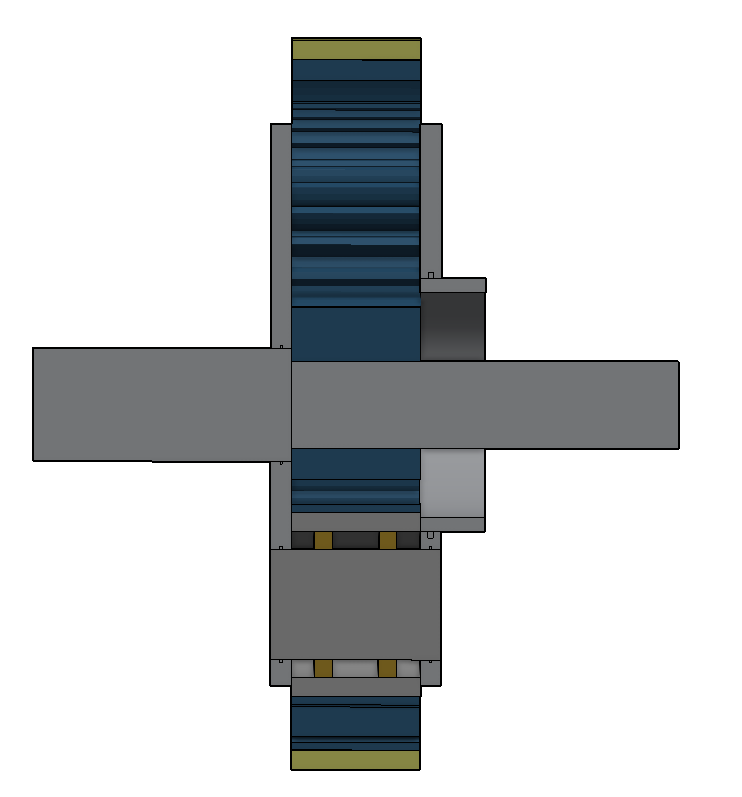 Ring gear shaft (shaft) | 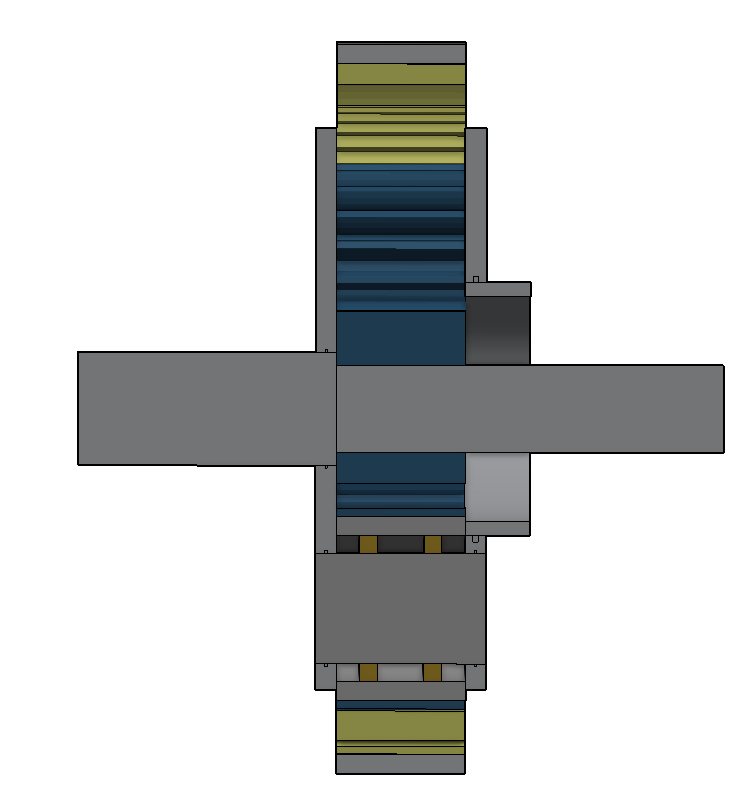 Ring gear (ring_gear) | 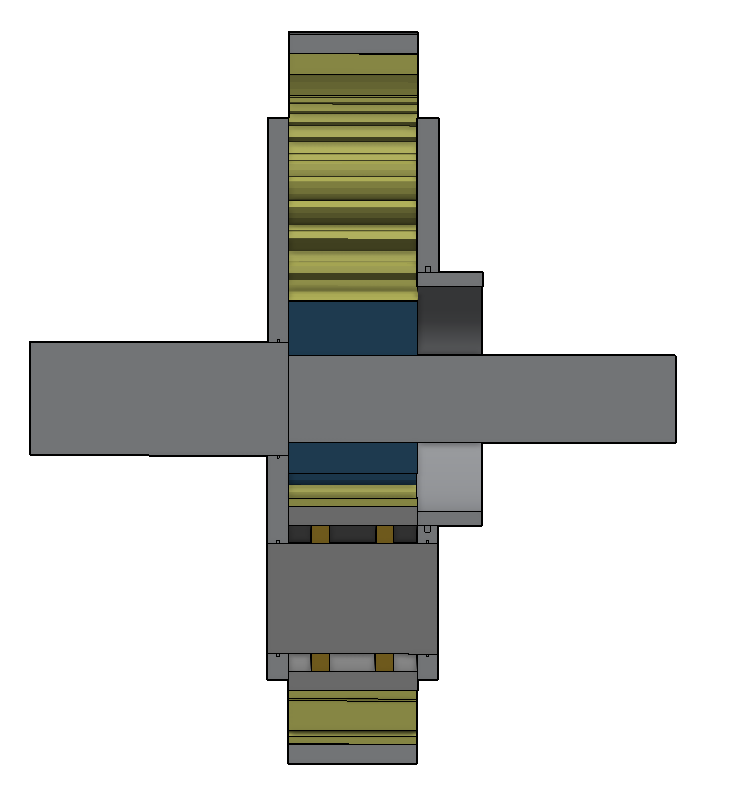 Planet-ring gear mesh (cylindrical_stage) |
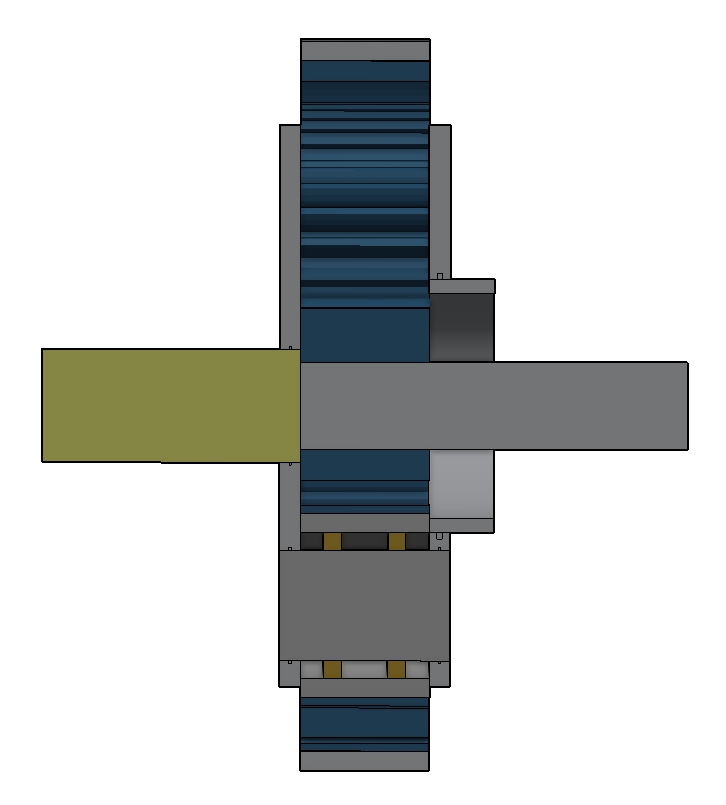 Carrier shaft (shaft) | 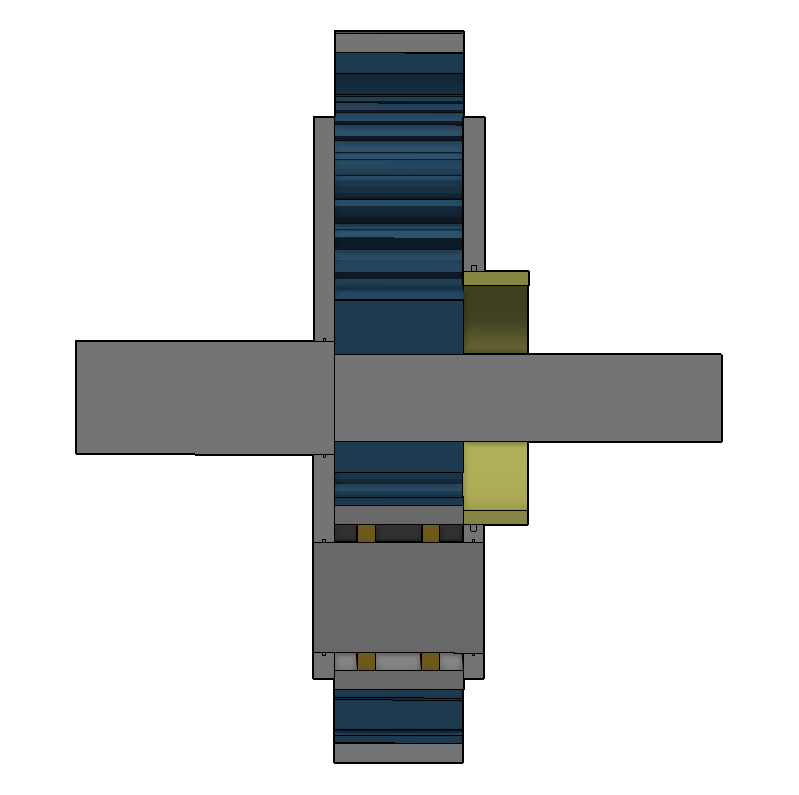 Carrier shaft (shaft) | 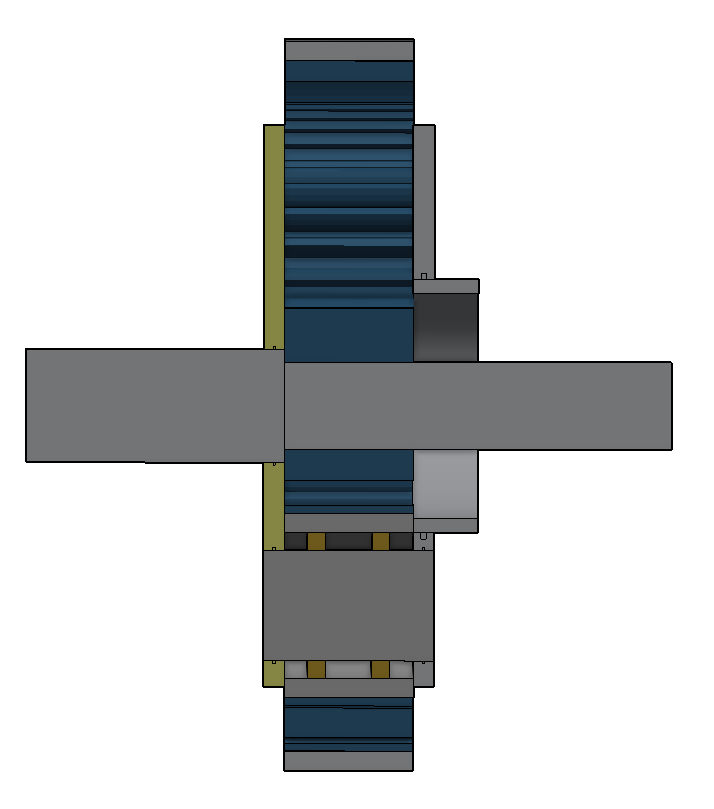 Side plate (side_plate) | 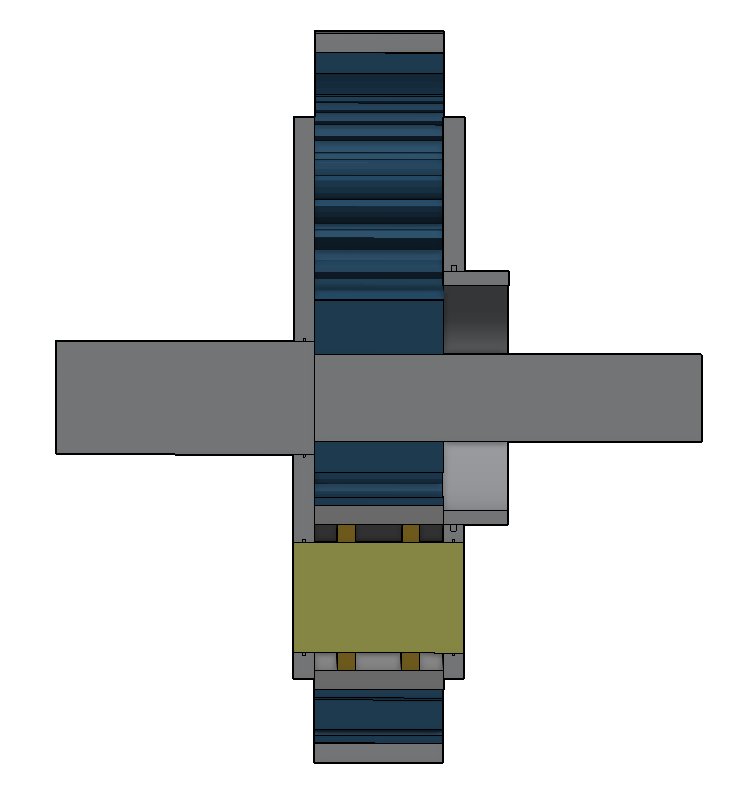 Pin (shaft) |
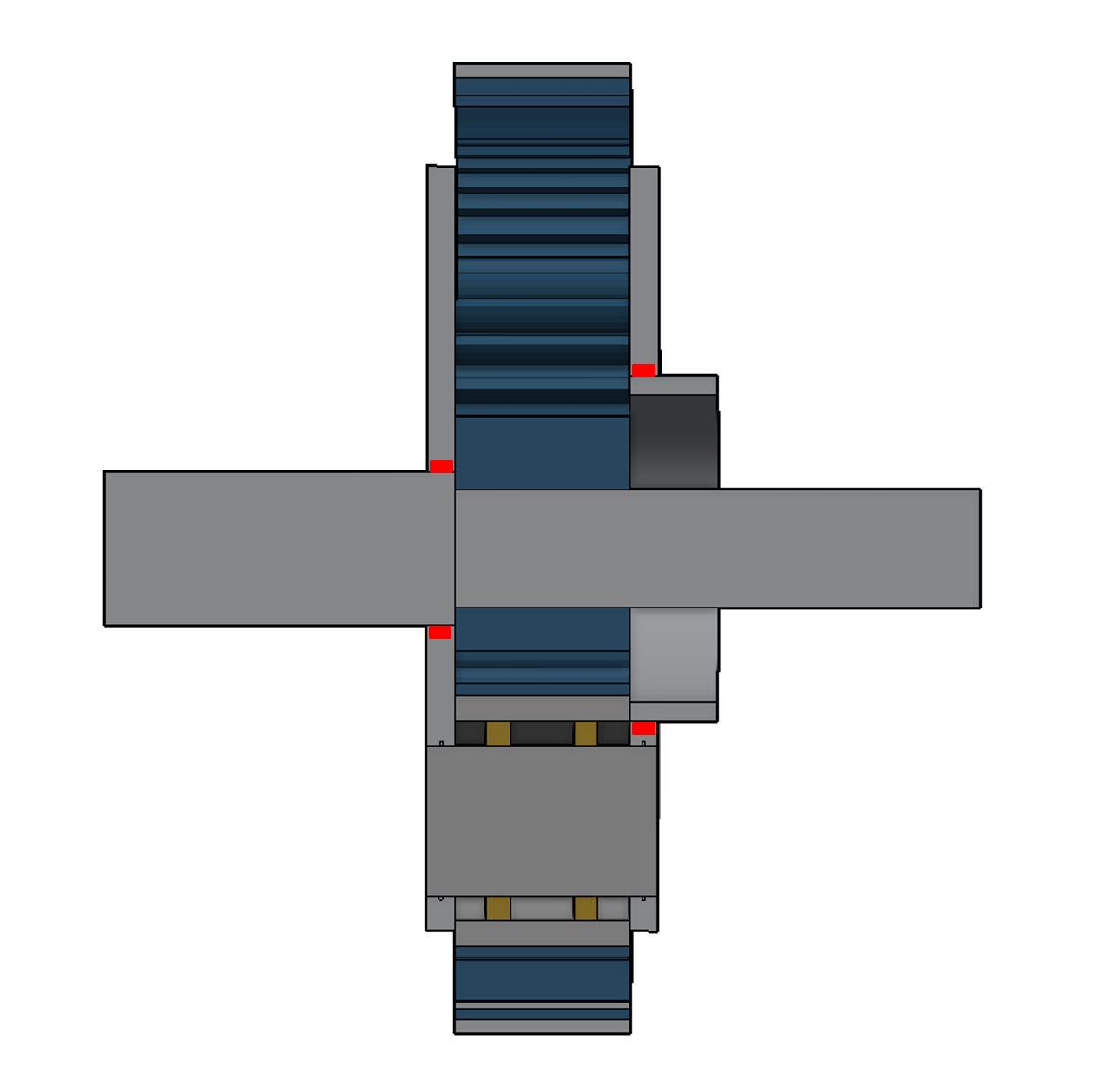 Carrier-side plate coupling (coupling) | 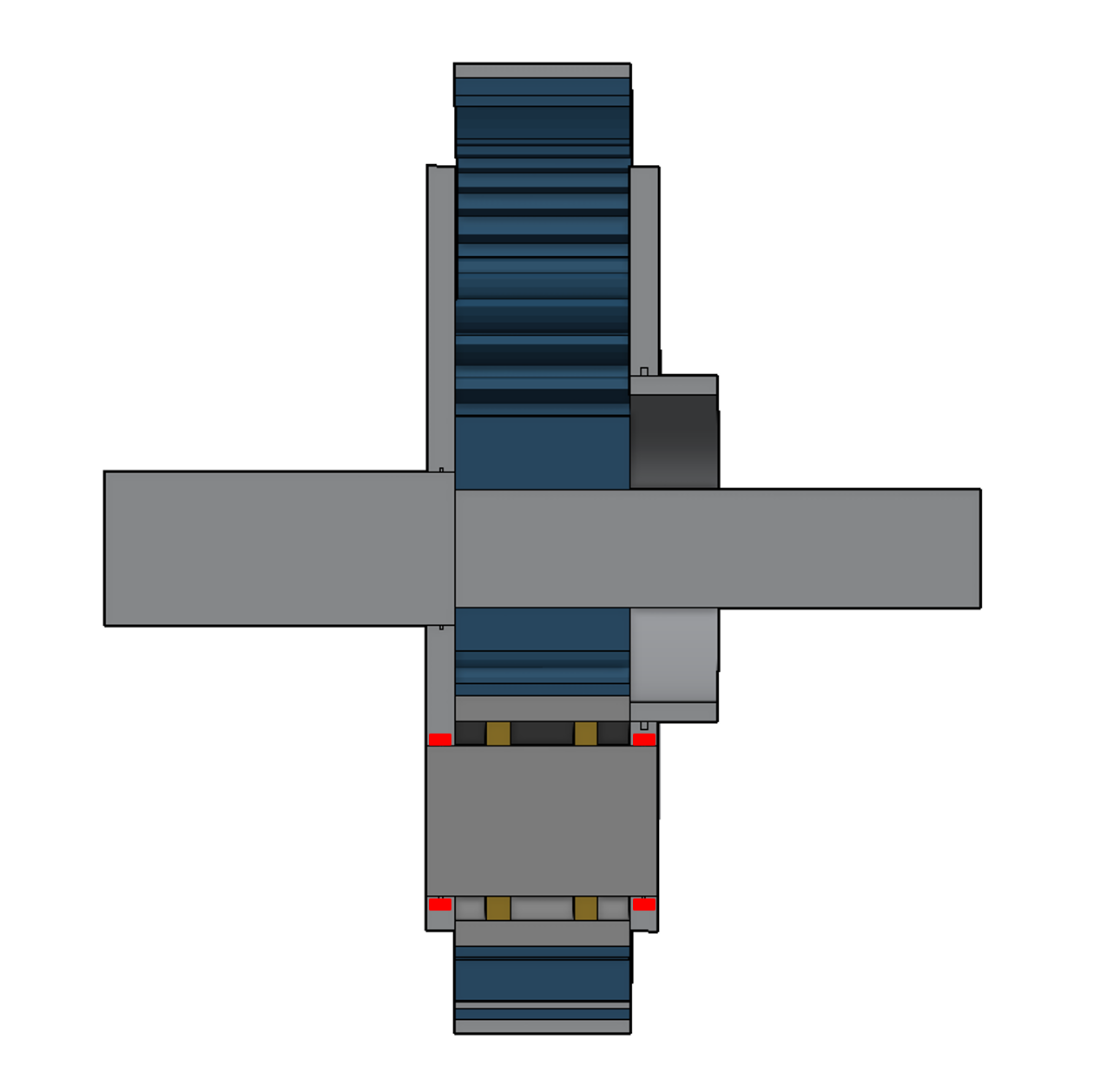 Pin-side plate coupling (coupling) | 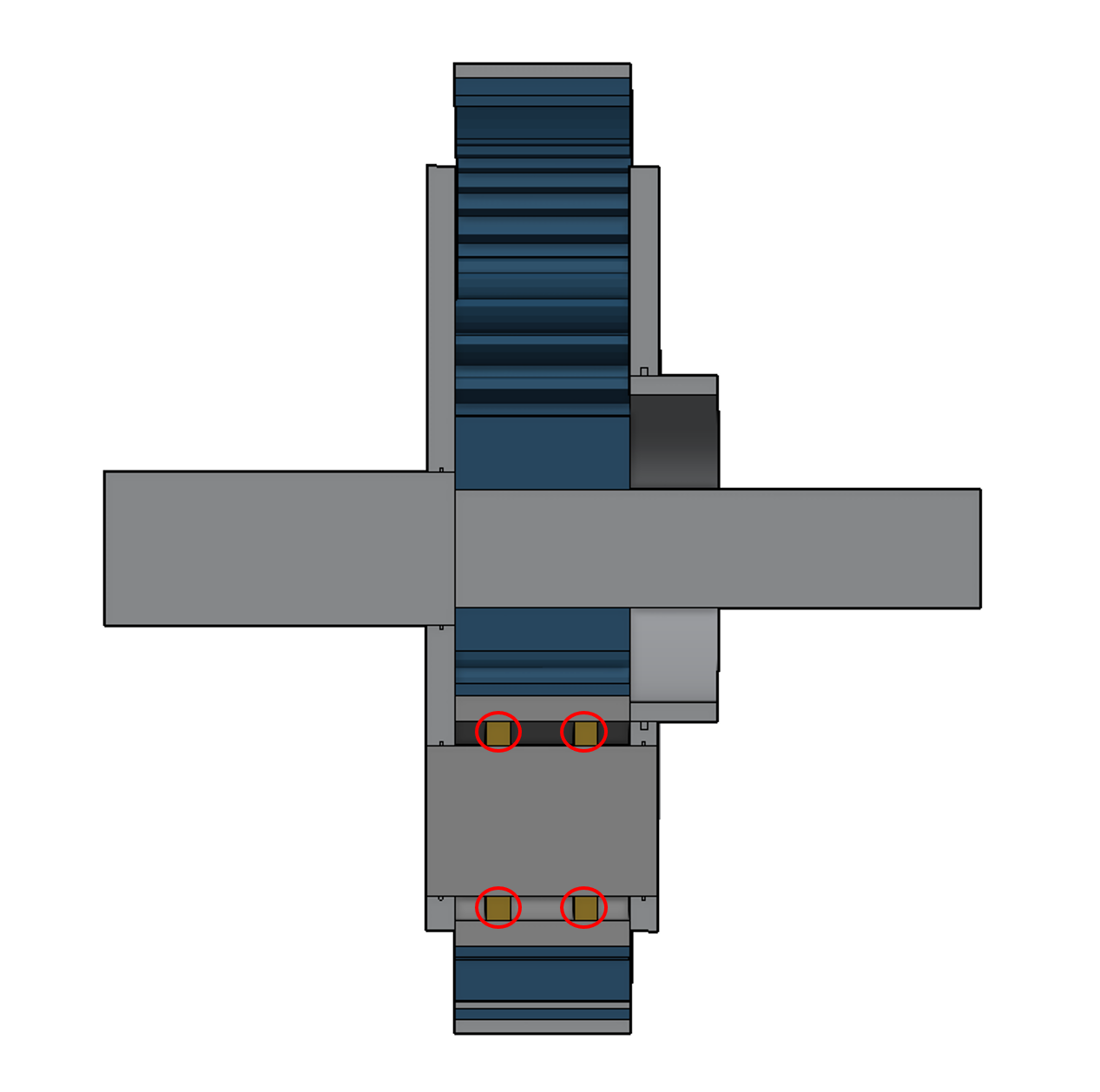 Pin-planetary bearing (concept_bearing) | 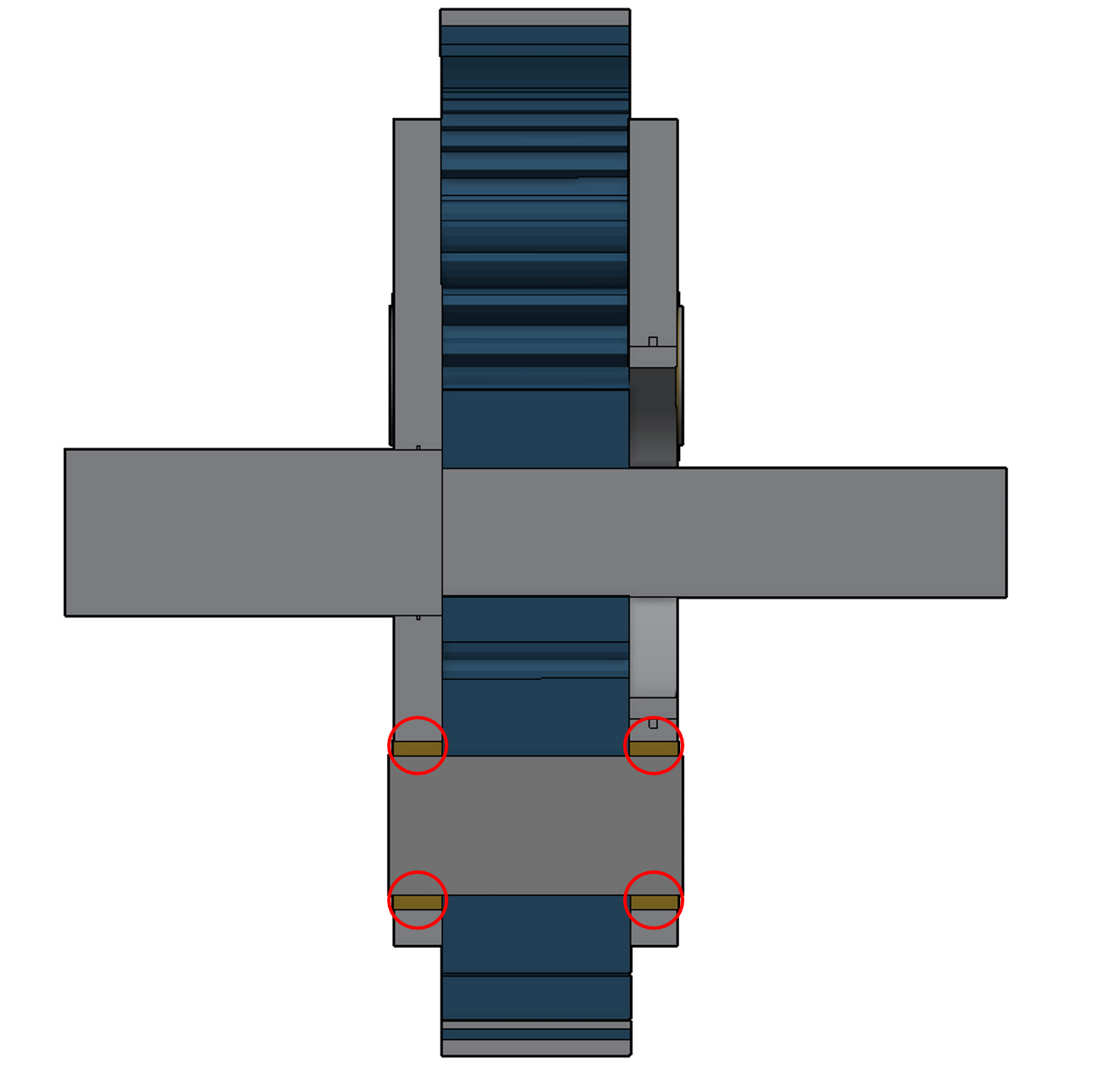 Side plate planetary bearing (concept_bearing) |
Modeling in REXS
The following describes the modeling rules for representing planetary stages in REXS.
Non-constrained partial cylindrical gear units are represented in REXS via planetary stage assemblies (component-type="planetary_stage"). These assemblies are characterized as follows (delineation is particularly important in complex gearboxes with multiple coupled planetary stages):
A planetary stage is assigned exactly one planet carrier; therefore, all planetary shafts of the stage must be mounted in the same carrier
A planetary stage has at least one planetary shaft and a central shaft
A planetary stage has at least one sun gear-planet gear or planet gear-ring gear engagement
No planetary shafts of the stage are connected with components outside the planetary stage
Every component that is physically present in the planetary stage must be explicitly modeled (e.g., planetary shaft, sun-planet mesh, planetary gear, planetary bearings, etc.). Therefore, the following simple example has 3 planetary shafts, 3 planetary gears, 3 sun-planet engagements, 3 planet-ring gear engagements, 6 planetary bearings, etc.
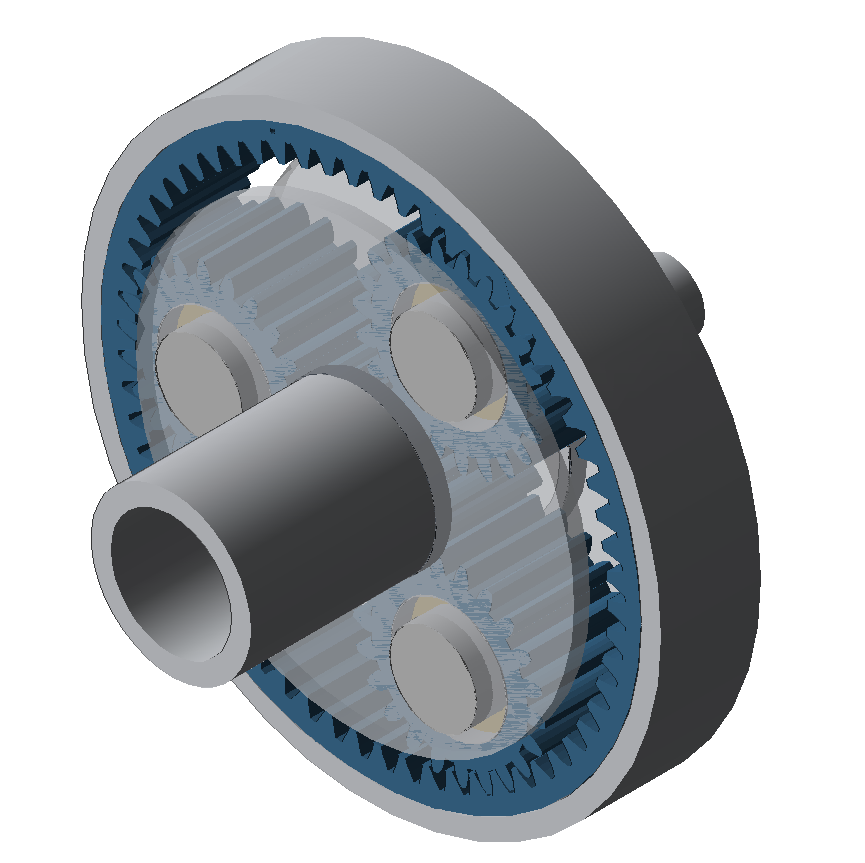 | 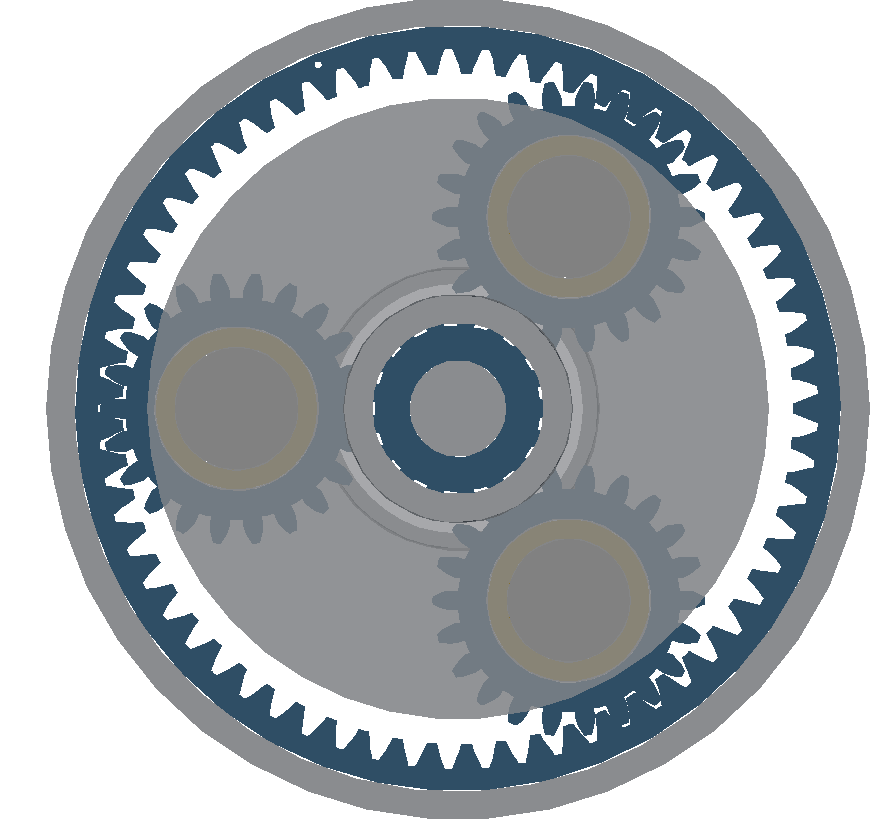 | 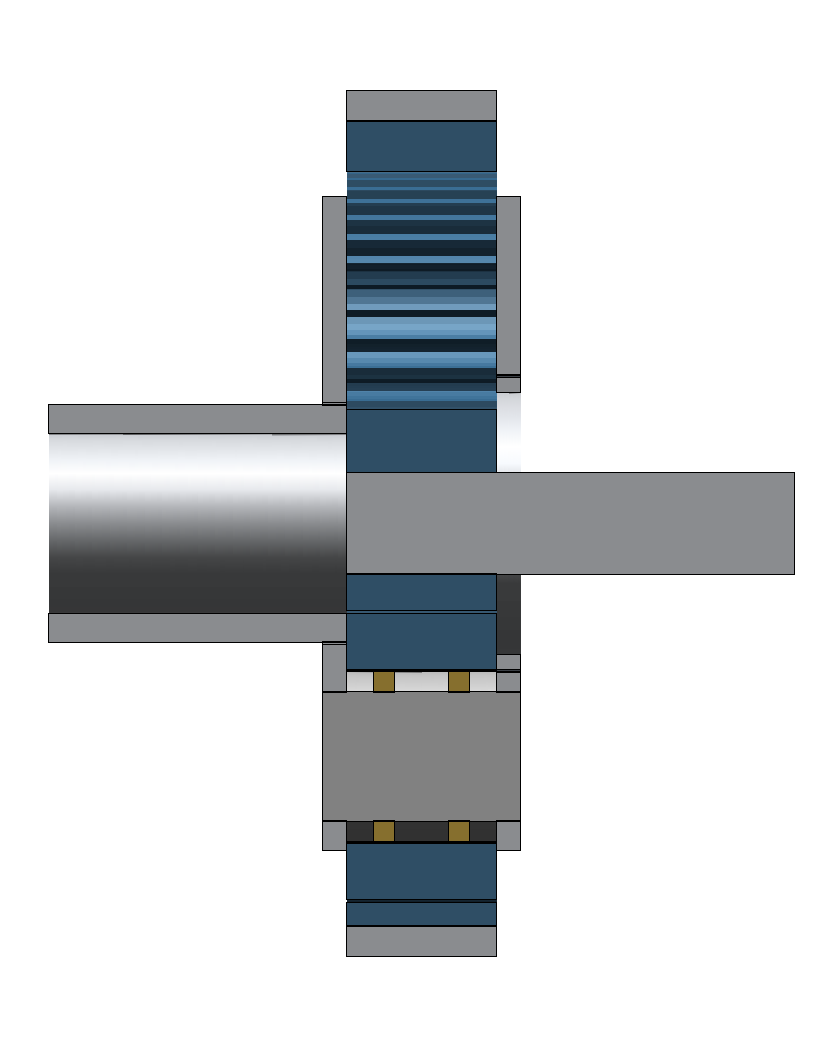 |
Planetary stages| planetary_stage
The planetary stage component (planetary_stage) primarily serves as a representative of the assembly and a central connection point for the relations to the various components of the planetary stage.
Required components | XML syntax |
|---|---|
Planetary stage | |
Planet carrier | |
Cylindrical gear stage | |
Planet shaft | |
Central shaft | |
Carrier shaft | |
Optional components | XML syntax |
|---|---|
Pin | |
Required relations | XML syntax |
|---|---|
Assembly relation | <relation id="1" type="assembly">
<ref id="1" role="assembly" hint="gear_unit"/>
<ref id="3" role="part" hint="planetary_stage"/>
</relation> |
Assembly relation | <relation id="2" type="assembly"> <ref id="3" role="assembly" hint="planetary_stage"/> <ref id="4" role="part" hint="planet_carrier"/> </relation> |
Assembly relation for every engagement in the planetary stage | <relation id="3" type="assembly"> <ref id="3" role="assembly" hint="planetary_stage"/> <ref id="5" role="part" hint="cylindrical_stage"/> </relation> |
Planet_shaft relation for every planetary shaft in the planetary stage | <relation id="4" type="planet_shaft"> <ref id="3" role="planetary_stage" hint="planetary_stage"/> <ref id="6" role="shaft" hint="shaft"/> </relation> |
Central_shaft relation for every central shaft in the planetary stage | <relation id="5" type="central_shaft"> <ref id="3" role="planetary_stage" hint="planetary_stage"/> <ref id="7" role="shaft" hint="shaft"/> </relation> |
Planet_carrier_shaft relation for every carrier shaft in the planetary stage | <relation id="6" type="planet_carrier_shaft"> <ref id="3" role="planetary_stage" hint="planetary_stage"/> <ref id="8" role="shaft" hint="shaft"/> </relation> |
Planet_pin relation for every pin in the planetary stage | <relation id="7" type="planet_pin"> <ref id="3" role="planetary_stage" hint="planetary_stage"/> <ref id="9" role="shaft" hint="shaft"/> </relation> |
Planet carrier | planet_carrier
The planet carrier component (planet_carrier) primarily serves as a representative of the planet carrier assembly and a central connection point for the relations to the various components of the carrier. A planet carrier must have at least one carrier shaft and a side plate. Pins may be used, depending on the design of the planet carrier structure.
A mechanical substitute model can be used to model the stiffening effect of struts in the analytical model of the planet carrier (see "Substitute model for the struts").
Required components | XML syntax |
|---|---|
Planetary stage | |
Planet carrier | |
Carrier shaft | |
Side plate | |
Optional components | XML syntax |
|---|---|
Pin | |
Connecting shaft | |
Required relations | XML syntax |
|---|---|
Assembly relation | <relation id="2" type="assembly">
<ref id="3" role="assembly" hint="planetary_stage"/>
<ref id="4" role="part" hint="planet_carrier"/>
</relation> |
Assembly relation for every carrier shaft in the planet carrier | <relation id="8 "type="assembly">
<ref id="4" role="assembly" hint="planet_carrier"/>
<ref id="8" role="part" hint="shaft"/>
</relation> |
Assembly relation for every side plate in the planet carrier | <relation id="9" type="assembly">
<ref id="4" role="assembly" hint="planet_carrier"/>
<ref id="10" role="part" hint="side_plate"/>
</relation> |
Assembly relation for every pin in the planet carrier | <relation id="10" type="assembly">
<ref id="4" role="assembly" hint="planet_carrier"/>
<ref id="9" role="part" hint="shaft"/>
</relation> |
Assembly relation for the connecting shaft in the planet carrier | <relation id="11" type="assembly">
<ref id="4" role="assembly" hint="planet_carrier"/>
<ref id="11" role="part" hint="shaft"/>
</relation> |
Side plates | side_plate
A disc-like component of the planet carrier that is fixed to a carrier shaft, and in which either the planetary shafts or the pins are excentrically mounted. A side plate is connected with other components via either a coupling (every carrier-side plate as well as every side plate-pin connection) or a bearing (every side plate-planetary shaft connection).
Required components | XML syntax |
|---|---|
Planet carrier | |
Carrier shaft | |
Side plate | |
Coupling to the carrier shaft | |
Optional components | XML syntax |
|---|---|
Pins if present | |
Couplings to the pins | |
Planetary bearings if the planetary shaft is mounted in the side plate | |
Planet shaft if the planetary shaft is mounted in the side plate | |
Required relations | XML syntax |
|---|---|
Assembly relation | <relation id="9" type="assembly">
<ref id="4" role="assembly" hint="planet_carrier"/>
<ref id="10" role="part" hint="side_plate"/>
</relation> |
Side relation for the carrier-shaft coupling | <relation id="12" type="side">
<ref id="12" role="assembly" hint="coupling"/>
<ref id="8" role="inner_part" hint="shaft"/>
<ref id="10" role="outer_part" hint="side_plate"/></relation> |
Side relation for every side plate-pin coupling | <relation id="13" type="side">
<ref id="13" role="assembly" hint="coupling"/>
<ref id="9" role="inner_part" hint="shaft"/>
<ref id="10" role="outer_part" hint="side_plate"/>
</relation> |
Side relation for every side plate-planetary shaft bearing point | <relation id="14" type="side">
<ref id="14" role="assembly" hint="concept_bearing"/>
<ref id="15" role="inner_part" hint="shaft"/>
<ref id="10" role="outer_part" hint="side_plate"/>
</relation> |
Couplings | coupling
Modeling of coupling points is described in the Couplings section.
Substitute model for the struts
A mechanical substitute model can be used to model the stiffening effect of struts in the analytical model of the planet carrier. An FE assembly is recommended for realistic modeling and consideration of the stiffness of the planet carrier (see "Modeling Assembly Groups").
Option 1
A double-plate planet carrier is modeled with 2 separate carrier shafts. A side plate is connected to each carrier shaft via a coupling position. The geometry of the struts that connect both plates is defined via the corresponding attribute for the planet_carrier component.
Option 2
A double-plate planet carrier is modeled with 2 separate carrier shafts. A side plate is connected to each carrier shaft via a coupling position. Additionally, a connecting shaft is modeled (coaxial with the central axis of the planetary stage) that is connected to each of the carrier shafts via an additional coupling. The effect of struts on the mechanical behavior of the planet carrier can be approximated by specifying the geometry of the connecting shaft.
Option 3
A double-plate planet carrier is modeled with a single, continuous carrier shaft. Both side plates are connected to the carrier shaft via couplings; the area of the carrier shaft between the side plates approximates the effect of struts on the mechanical behavior of the planet carrier.
Cylindrical gear stages | cylindrical_stage
The individual engagements in a planetary stage are represented by cylindrical gear stages. Sun-planet and planet-planet engagements are external cylindrical gear stages; planet-ring gear engagements are internal cylindrical gear stages. Modeling cylindrical stages is described in the Gears section.
Bearings | concept_bearing
Modeling bearings (planetary bearings, central and carrier shaft bearings) is described in the bearings ??? section.